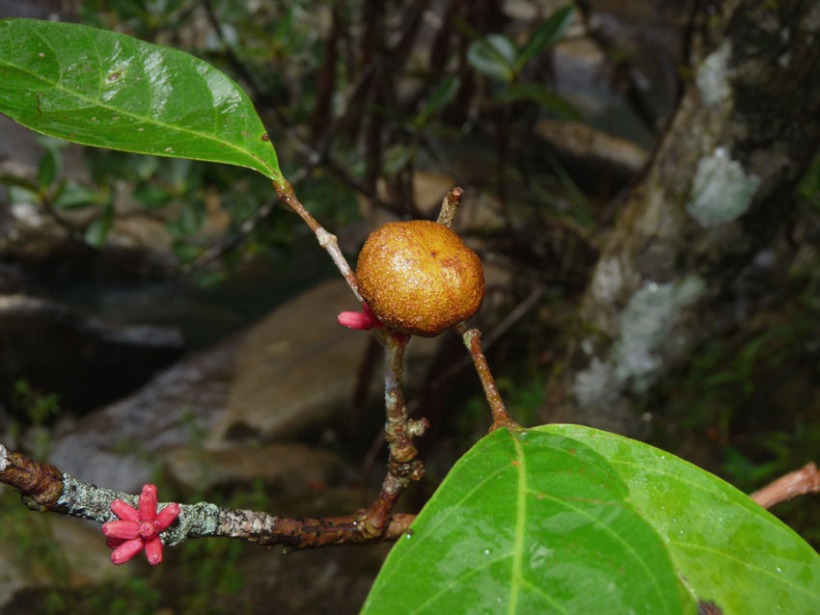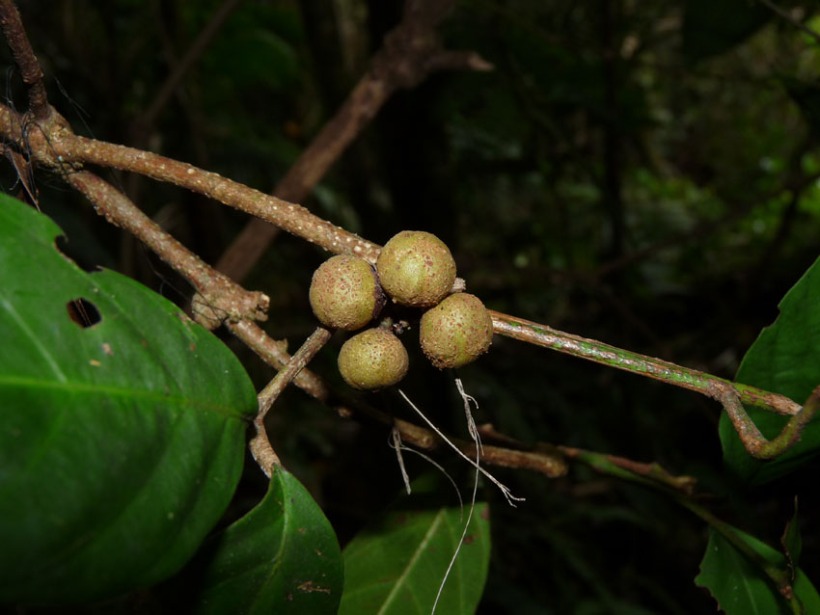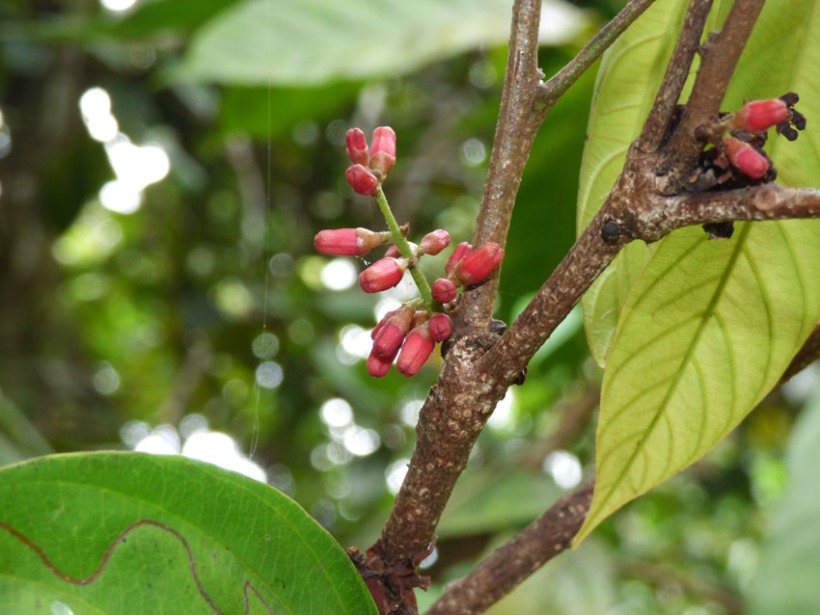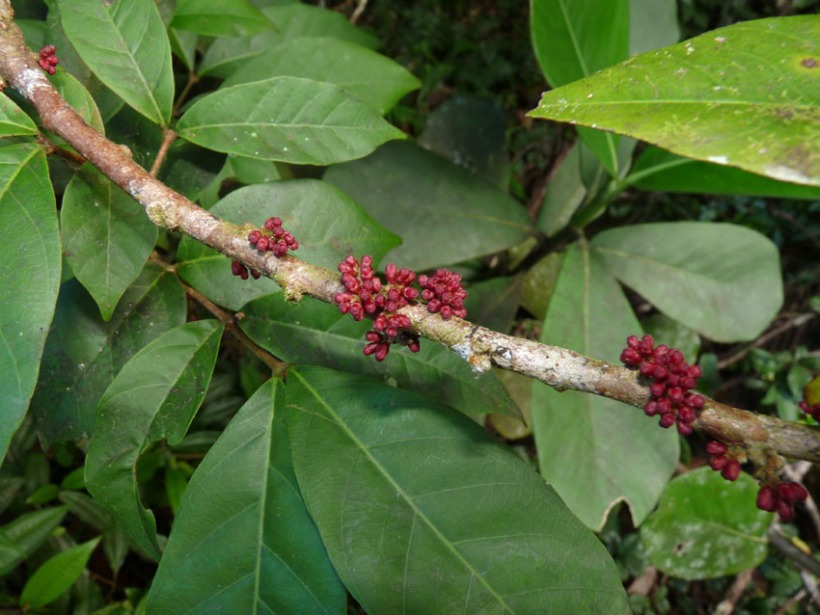 Dioecious tree, 3-15 m tall, the trunk to 16 cm dbh; outer bark soft, flaky, easily scraped off; stems roughened with fine lenticels; young petioles and leaves ± sericeous, becoming glabrate. Leaves paripinnate, to 54 cm long; petioles flat and margined above, swollen at base; petiolules 5-10 mm long, swollen; leaflets 6-12, ovate-elliptic to oblong, acuminate and downturned at apex, acute to obtuse at base, 7-25 cm long, 4-7 cm wide, glabrous above, glabrate below. Inflorescences racemose, axillary or on older leafless branches, to 23 cm long; flowers with sweet aroma, functionally unisexual, well spaced, ca 1 cm long, solitary along rachis or clustered on very short branches; calyx cupular, 2-4 mm long, irregularly lobed, the lobes often fewer than petals, puberulent outside; petals white, 4 or 5 (6), to ca 10 mm long, usually puberulent outside, spreading or recurved near middle at anthesis; staminal tube cylindrical, white, 6-8 mm long; anthers 8 or 10 (12), borne inside near rim; ovary ± glabrous to sericeous, borne on a gynophore broadened just below ovary; style exserted above staminal tube; stigma capitate. Capsules subglobose to pyriform, to 2.5 cm diam, usually borne on a short stipe, reddish, variously mottled with lenticels in age, dehiscent by 4 or 5 woody valves; seeds 1 or 2 per carpel, covered with a red aril, irregular. Croat 8493, 8814.
Dioecious tree, 3-15 m tall, the trunk to 16 cm dbh; outer bark soft, flaky, easily scraped off; stems roughened with fine lenticels; young petioles and leaves ± sericeous, becoming glabrate. Leaves paripinnate, to 54 cm long; petioles flat and margined above, swollen at base; petiolules 5-10 mm long, swollen; leaflets 6-12, ovate-elliptic to oblong, acuminate and downturned at apex, acute to obtuse at base, 7-25 cm long, 4-7 cm wide, glabrous above, glabrate below. Inflorescences racemose, axillary or on older leafless branches, to 23 cm long; flowers with sweet aroma, functionally unisexual, well spaced, ca 1 cm long, solitary along rachis or clustered on very short branches; calyx cupular, 2-4 mm long, irregularly lobed, the lobes often fewer than petals, puberulent outside; petals white, 4 or 5 (6), to ca 10 mm long, usually puberulent outside, spreading or recurved near middle at anthesis; staminal tube cylindrical, white, 6-8 mm long; anthers 8 or 10 (12), borne inside near rim; ovary ± glabrous to sericeous, borne on a gynophore broadened just below ovary; style exserted above staminal tube; stigma capitate. Capsules subglobose to pyriform, to 2.5 cm diam, usually borne on a short stipe, reddish, variously mottled with lenticels in age, dehiscent by 4 or 5 woody valves; seeds 1 or 2 per carpel, covered with a red aril, irregular. Croat 8493, 8814.

Frequent in the forest. Seasonal behavior uncertain. Flowers at least from December to July, especially from March to June. The fruits probably mature mostly from April to September, especially in the rainy season.

A variable species, it has been identified by C. E. Smith under three other names as well, including G. guidonia (L.) Sleumer, G. kunthiana Adr. Juss., and G. tonduzii C. DC. It can be reported with certainty that G. tonduzii does not occur on BCI and furthermore that there is but a single species in this complex thus far collected on the island. The pubescence of the ovary, used in distinguishing G. glabra and G. guidonia, is at best a poor character.
A large caterpillar with stinging hairs has been seen eating the leaves.

Mexico to Colombia, Venezuela, and Ecuador; West Indies. In Panama, known from tropical moist forest in the Canal Zone, Bocas del Toro, San Blas, Panama, and Darien and from tropical wet forest in Colón and Chiriqui; probably occurring in most areas of tropical moist and tropical wet forests.




